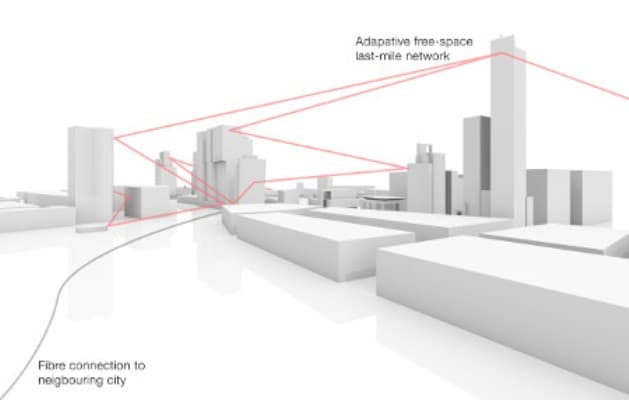Twisted Light Communication Eliminates The Need Of Fibre Optic Cables
The most widely used data transmission medium is optic fibre cables. All telecom companies rely on underground fibre optic network for their operations. This transmission mode has proven its mettle across the world but sadly it has its demerits. In remote places it is either difficult or infeasible to lay fibre optic cables and additionally any physical damage can cause distortion. What if we could transmit data wirelessly without any interference? That would eliminate the need for a physical medium and a team of scientists from four countries have managed to do just that. Their transmission medium involves twisted light and it has proven to be more reliable and faster than fibre optic transmission.
A team of physicists from UK, Germany, New Zealand and Canada collaborated at the University of Glasgow in Scotland decided to use twisted light for wireless communications. Their first hurdle was to twist light. Light as you know consists of photons and they used a special type of hologram to twist the photons using a phenomenon known as optical angular momentum. The twists are not only to redirect the data but also add to the digital communication. The twist in photons enables them to carry more data. This means that that they can offer much larger bandwidth. Now optical angular momentum has been previously used to transmit data over fibre optic cables which made the first step easier but the problem here is that no one had ever used this technique across open spaces. In open spaces atmospheric pressures can scatter light beams which can lead to loss of information. To eliminate this risk they used pre-correction techniques to mitigate vortex splitting.

Once they did that they tested their invention which they dubbed as free space link in Erlangen in Germany. They scaled their network over 1.6km distance which had topological features like open fields, roads and high-rise buildings. They were able to successfully transmit data over the entire distance without any distortion. This proof-of-concept experiment could lead to more wide scale tests which can fully examine the potential of free space optics.
While the scientists managed to achieve this incredible feat the real world implementation is still farfetched because of the following reasons. The free space optics was tested in clear weather conditions and they haven’t been tested in rain or snow. You cannot use this technique to transmit data indoors and any moving physical object can block the transmission. This experiment must be furthered by others so that one may find ways to implement it commercially in areas where cabling is not an option.
Source: #-Link-Snipped-# via #-Link-Snipped-#
A team of physicists from UK, Germany, New Zealand and Canada collaborated at the University of Glasgow in Scotland decided to use twisted light for wireless communications. Their first hurdle was to twist light. Light as you know consists of photons and they used a special type of hologram to twist the photons using a phenomenon known as optical angular momentum. The twists are not only to redirect the data but also add to the digital communication. The twist in photons enables them to carry more data. This means that that they can offer much larger bandwidth. Now optical angular momentum has been previously used to transmit data over fibre optic cables which made the first step easier but the problem here is that no one had ever used this technique across open spaces. In open spaces atmospheric pressures can scatter light beams which can lead to loss of information. To eliminate this risk they used pre-correction techniques to mitigate vortex splitting.

Once they did that they tested their invention which they dubbed as free space link in Erlangen in Germany. They scaled their network over 1.6km distance which had topological features like open fields, roads and high-rise buildings. They were able to successfully transmit data over the entire distance without any distortion. This proof-of-concept experiment could lead to more wide scale tests which can fully examine the potential of free space optics.
While the scientists managed to achieve this incredible feat the real world implementation is still farfetched because of the following reasons. The free space optics was tested in clear weather conditions and they haven’t been tested in rain or snow. You cannot use this technique to transmit data indoors and any moving physical object can block the transmission. This experiment must be furthered by others so that one may find ways to implement it commercially in areas where cabling is not an option.
Source: #-Link-Snipped-# via #-Link-Snipped-#
0
